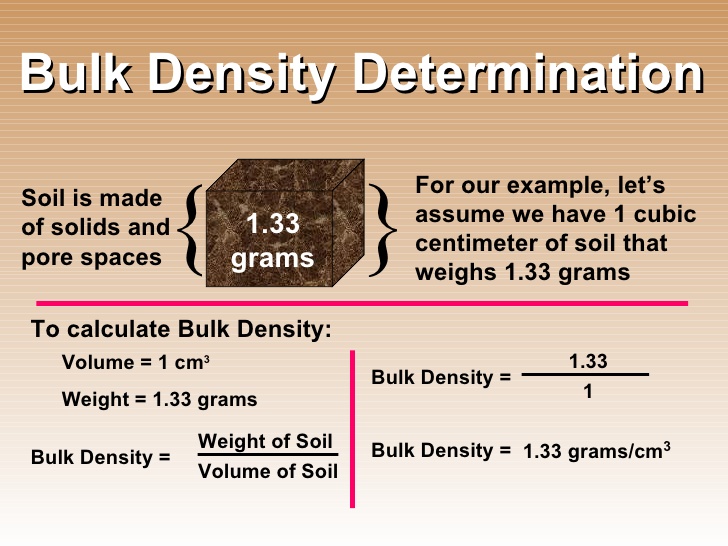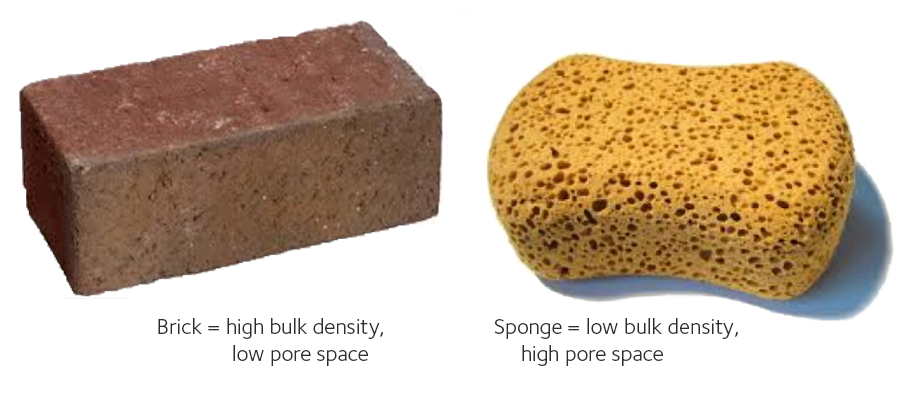Bulk density is a measure of the mass of soil per unit volume. It’s usually expressed in grams per cubic centimeter (g/cm³). Bulk density is an important property of soil because it affects water retention, root penetration, soil porosity, and ultimately plant growth. It’s not the only way to characterize soil, but bulk density is an important measure of soil health.
How Bulk Density is Calculated
The diagram below explains how the bulk density of soil is calculated.
High Bulk Density vs. Low Bulk Density
Soils with high bulk density can limit water infiltration, reduce the availability of nutrients to plants, and restrict root growth. Sometimes, high bulk density indicates soil compaction, which can be caused by heavy machinery, repeated tilling, or even heavy foot traffic. When soils are compacted, they have less available pore space.
Low bulk density usually signifies a healthy, well-aerated, and well-drained soil. Because the soil has more spaces between particles, there’s better circulation and water movement. Although low bulk density soil has good drainage, it can also retain the water that plants need. Importantly, low bulk density soils are also less likely to erode because they can absorb water more efficiently.
The picture below illustrates the relationship between pores and bulk density.
Soil Types and Bulk Density
Different types of soil have different bulk densities. For example:
- Sandy soils have higher bulk densities because they have less pore space. Their average bulk density is between 1.5 to 1.7 g/cm³.
- Loamy soils contain a mixture of sand, silt, and clay. They typically have bulk densities between 1.2 to 1.6 g/cm³.
- Clayey soils have a high percentage of clay particles, which gives them a large surface area relative to their volume. Bulk densities average from 1.0 to 1.3 g/cm³.
The bulk densities listed above are just general values, and it’s important to remember that these aren’t the only types of soil. For example, silty soil contains more than 80% silt, which is a type of sediment made up of rock and mineral particles. For more information about soil, beginning with the basics, please see our article called What is Soil and Why Is It Important? Introducing the Soil Series.

